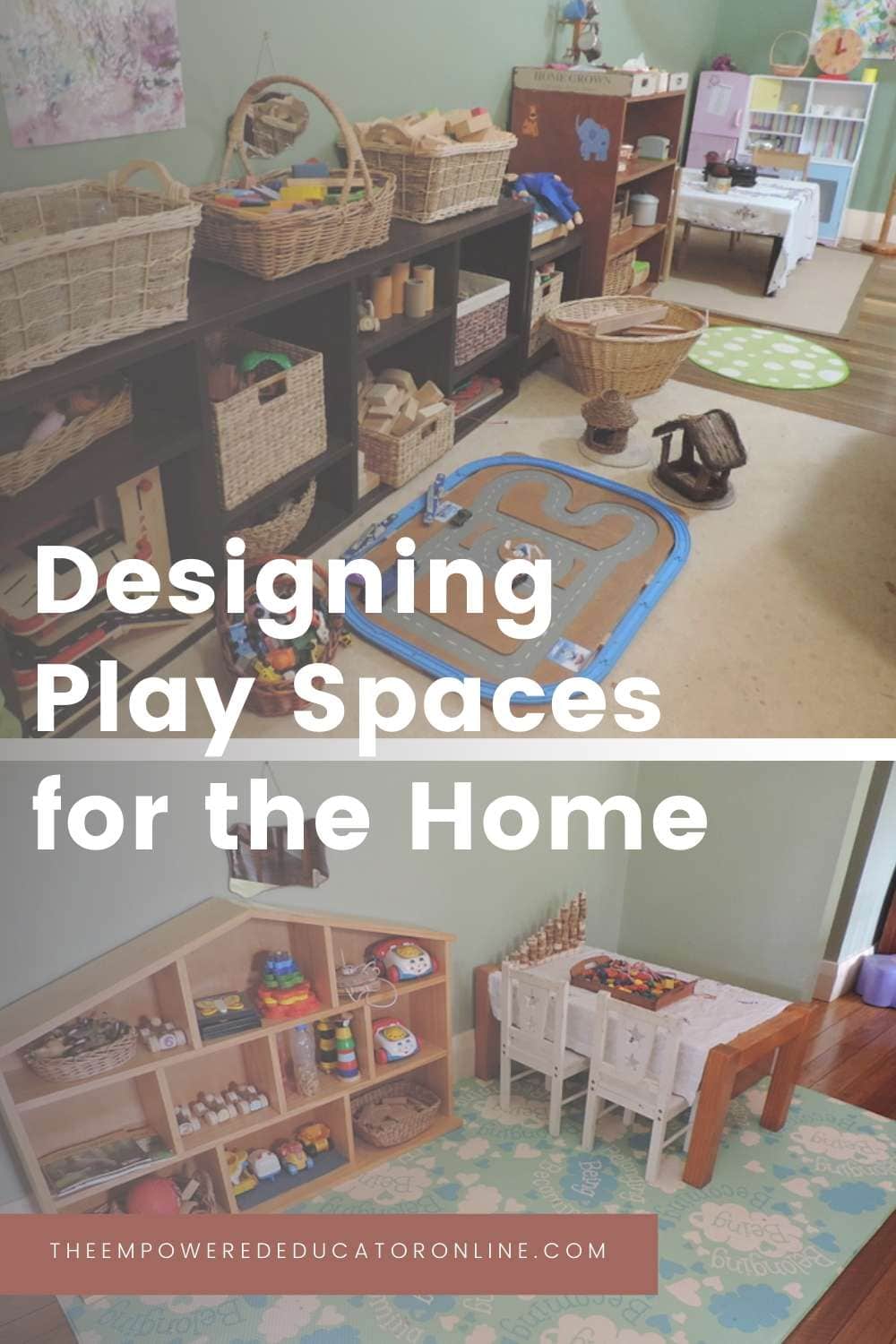
No matter whether you are a home based daycare educator, a parent, a grandparent, renting or own your own home, it is certainly worth your while to spend a little time creating a few child friendly play spaces within your home. That doesn't mean you have to feel as though your living in a toy store or child care centre, if you put some thought into your design you can provide some wonderful spaces for the children as well as keeping some space for the adults in the home!
Moving furniture around and playing with space in the home is something I love to do quite frequently. My other half has been known to get home from work and attempt to drop keys onto a table that is now on the other side of house. He never knows where I will move stuff to next, but I LOVE that and personally I blame my Mother because she did it when we were young 😉
The reason I like to do it is because as my children reach different ages and stages there are different things to consider and some things need to be changed to work a little better. And it keeps them occupied when they have new spaces to discover. Dare I say it sort of keeps them ‘quiet' for a few days. Ensuring you get the spaces right in your home means your own children or the children you care for will be happier, less prone to engaging in attention seeking behaviour and feel welcome, safe and secure.
I also find it best to rearrange spaces within the home when I am meant to be cleaning or washing or doing other boring things…in fact I have been known to waste a whole day just rearranging. I love that when the girls get home from preschool they usually ask “did you move anything today for us Mum?” Ha…the training has begun!
So how do you know what spaces to create and how to do it to ensure engaged and happy children (and adults too)? Listed below are a few essentials to consider and some tips for making the process easy.
Indoor Play Spaces – A few questions to ask yourself
- Is the environment safe for a mix of ages? I tend to put the games and toys with smaller pieces on higher shelves so that the older children can still access but not the younger ones. I also talk about the need to be careful with small toys if we have bubs or toddlers in care that day.
- Do you have shelves and other furniture set up so that a child can self select the items they want to play with? Is any shelving secured to the wall or not able to be pushed over onto an inquisitive child?
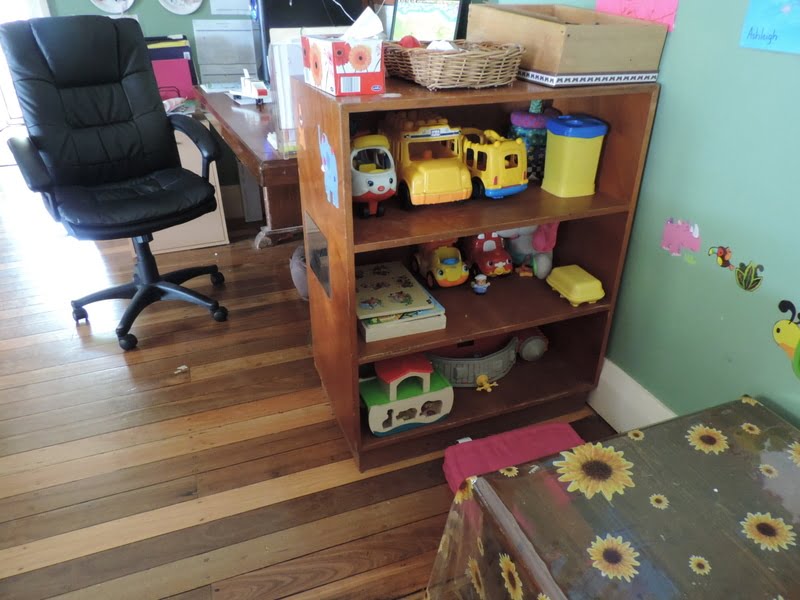
- Have you set up a child friendly storage system so that children can learn to pack up with you after play? I like to use baskets on my shelves and add laminated photos tied to handles of the toys that are housed there so everyone can help at pack up time, a great way to encourage a sense of pride in achievment and helping skills. I also put photos on the large storage boxes with lids I keep in the spare room which makes it a lot easier to do toy rotation each month. Too time poor to do your own? Check out these fab printable toy tub labels from Childhood 101 They're free!
- Have you provided opportunites for children to explore with their senses and use their fine and gross motor muscles while playing? Perhaps you have a ‘feely box' or a nature table…you only need small spaces to place these things but the children will enjoy investigating and it helps deter them from investigating those areas in the house you would prefer they left alone! Have you included access to a range of natural materials? (not necessarily toys)

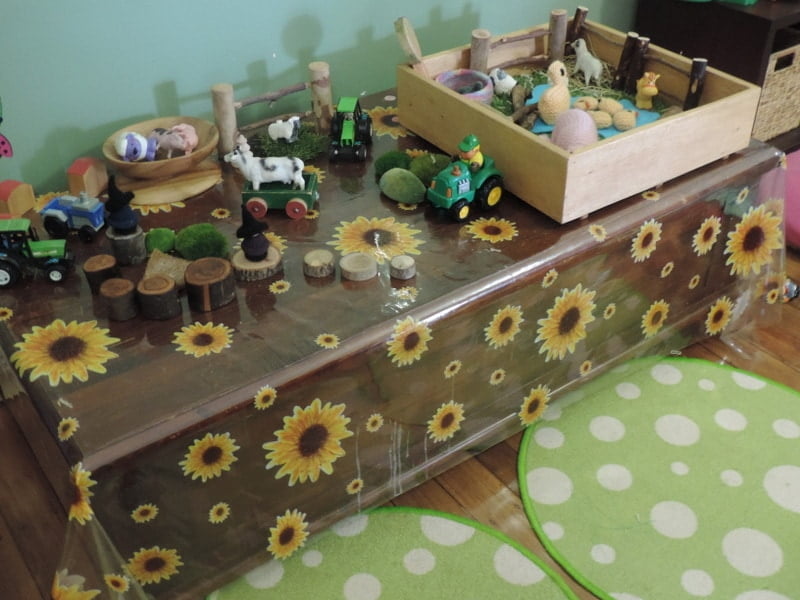
- Have you ensured there is a range of toys and equipment available for all ages and genders or do you see gender stereotyping as you look around?
- Have you made sure there is a quiet space or two set away from the main play areas so that those children experiencing a sensory overload or feeling tired can escape from others when they need to? This might be a few cushions and other soft furnishings behind a lounge with books to read or a cardboard box cubby or a big snuggle chair they can curl up in for a cuddle or to seek reassurance. Look at the space you have , where the children currently play the most and then see if you can design an area away from this action.
- Have you added a variety of real life props as well as play materials to your spaces? Including real items often used by parents in the home and their community supports children to try out a number of different roles in their play as well as explore other cultures and learn more about the ‘real world things' they probably see everyday. A few ‘real' items from the kitchen, a nice tablecloth, some plants here and there, real shoes, handbags and scarves in the dress up box, some gauze bandages and other first aid items in the hospital prop box are just some ideas.
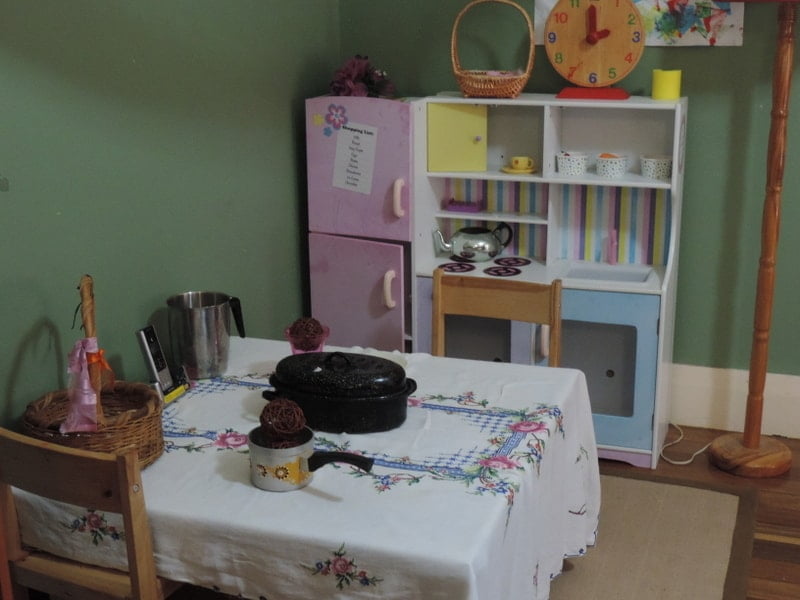
- Have you provided spaces that encourage and support self help skills and independence? Do you have a step in the bathroom area for children to access toilet and sinks? Have you provided hand towels or paper towel so children can wash and dry hands themselves? I also put pictures and labels on my bins so that the children are able to help with recycling and composting. Do they know where to store their belongings or find spare clothes if needed? I have photos and labels on my day care childrens hooks. A little velcro on the back and they can be changed each day and put out of sight on the weekends.
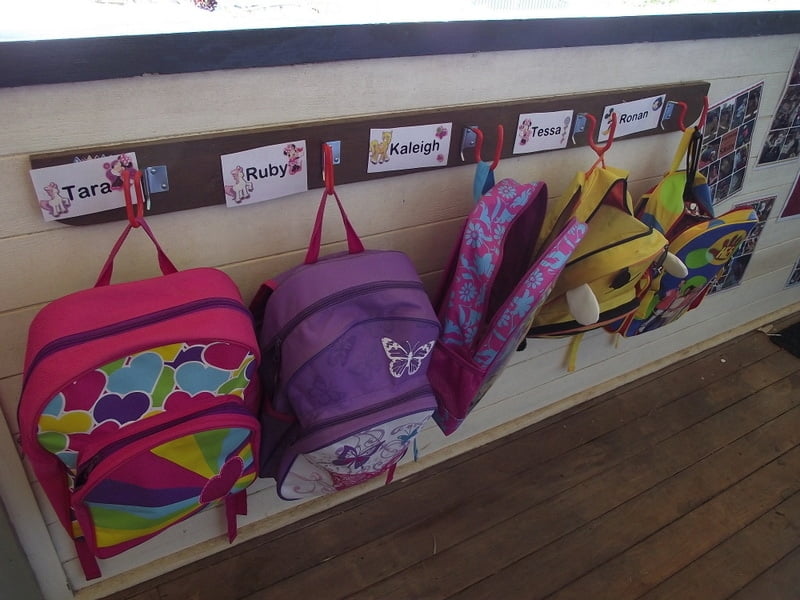
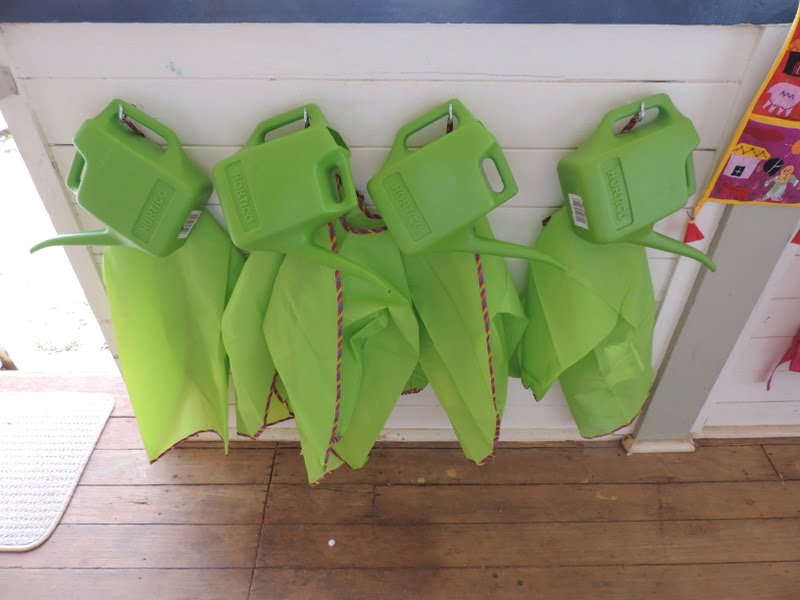
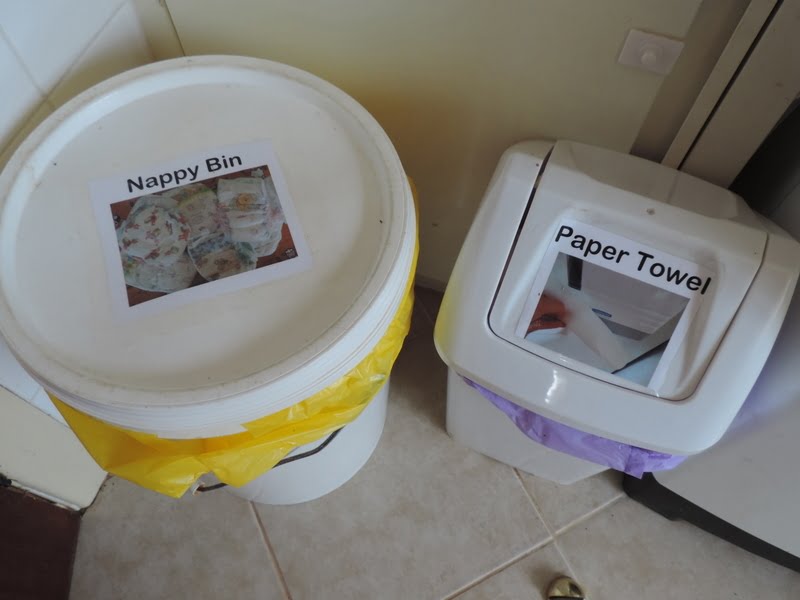
Have you made some space for storage of toys and craft materials so that you can rotate toys easily and access what you need when you need it?


- Have you made sure that a child has the opportunity to feel a real sense of self and belonging in your environment? Is there a space to display artwork and photos? Can they express themselves emotionally as well as physically through play and find a space of their own that means something to them? Do they feel safe and as if they belong in these areas you have created?
- Have you kept your house a home even though you have designed child friendly spaces? You might want to have a read of this previous post if it is something that concerns you. It can be done I promise.

Setting up Areas
So you've thought about the questions above but how do you actually physically set up the spaces, where do you start? My advice is don't overthink it. Consider your children's (or your daycare children's) current interests, ages, challenging behaviours and developmental stage. Think about the space you have and what you as parents/educators also need in your home for spaces to work.
I like to try and set up the following areas for children, they don't need to be big spaces like a child care centre but it is nice to have some definition and I try to do this by using the furnishings already have.
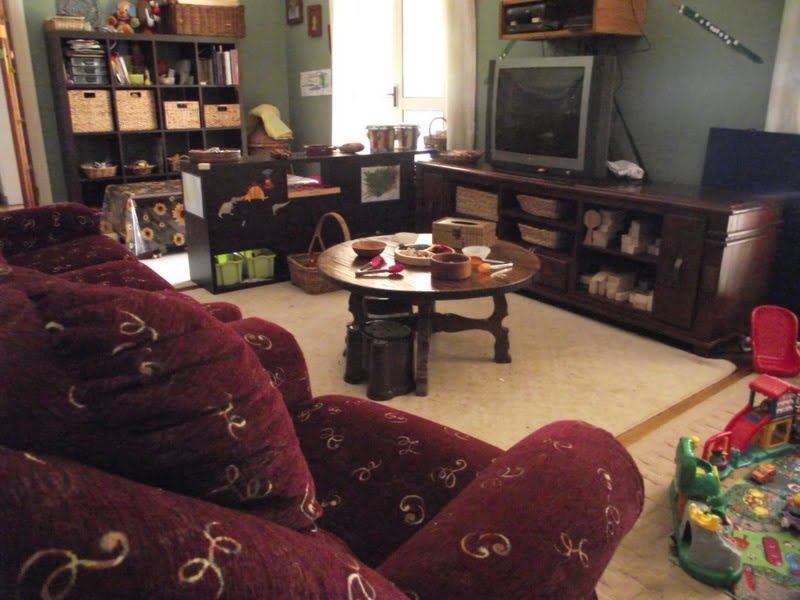
A home corner/dramatic play area.
Sometimes this has the little kitchen and a table set up, sometimes it's just a table with dressups and a mirror, other times it becomes a doctors office or a supermarket, other times it has cots and highchairs and baby food for the dolls. Basically it is a dramatic play area and although the children of course don't have to keep their play to this area it is where those particular toys and props are housed so the children know where to find what they need.
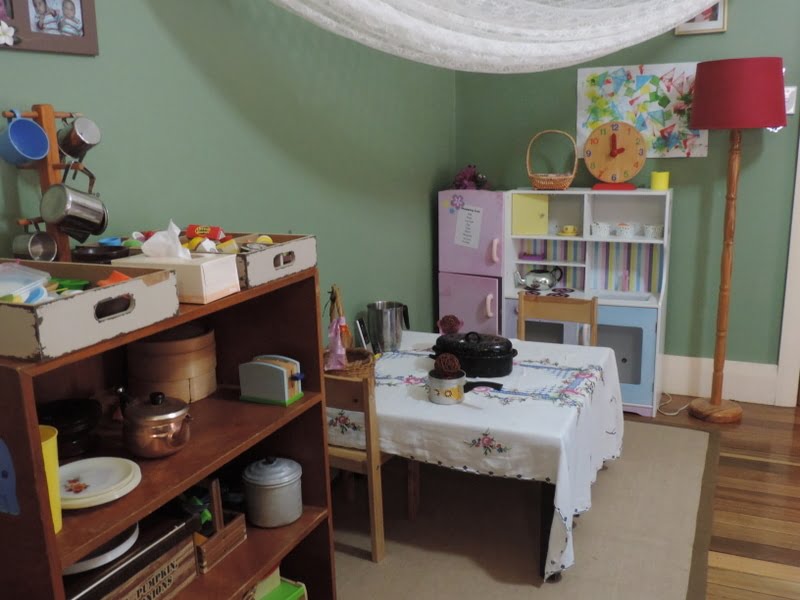
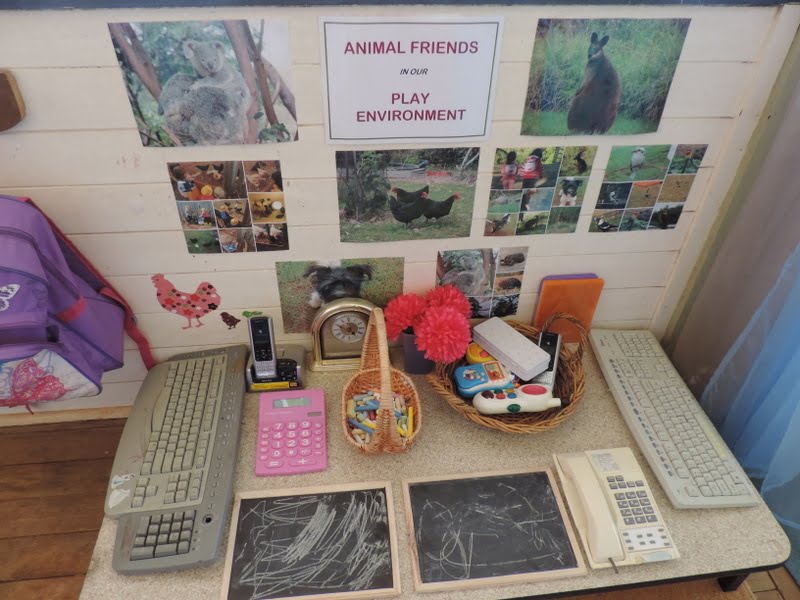
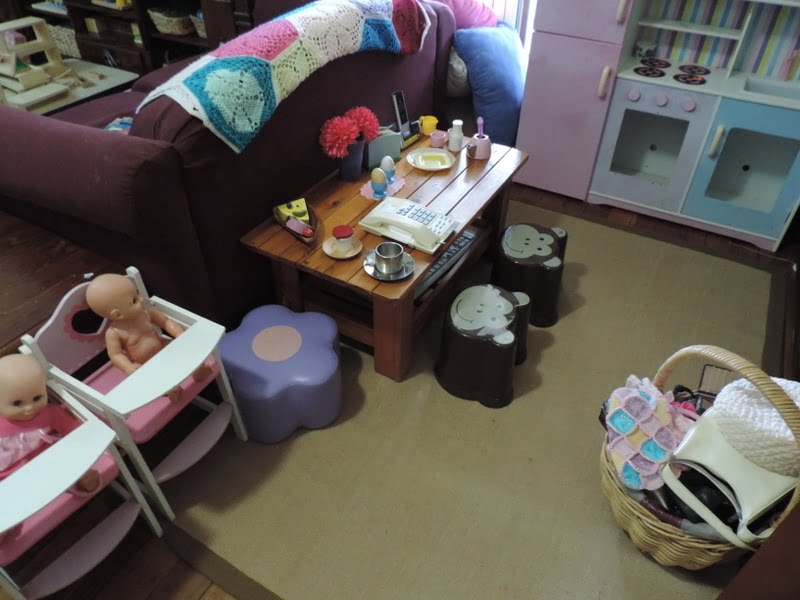
A block/building/construction/noisy area
This area usually has shelving of some sort with blocks, tools, loose parts and other manipulative type building activities. The play tends to be noiser and more energetic in this area so I have a mat down on my wooden floorboards and it is out of the main walkway areas so there is less chance of precious towers and other creations being knocked over accidentally. It also allows some leeway for leaving those constructions out for display when parents arrive. You can use shelving to ‘block in' this area to a degree and I find it encourages greater focus and investigation.
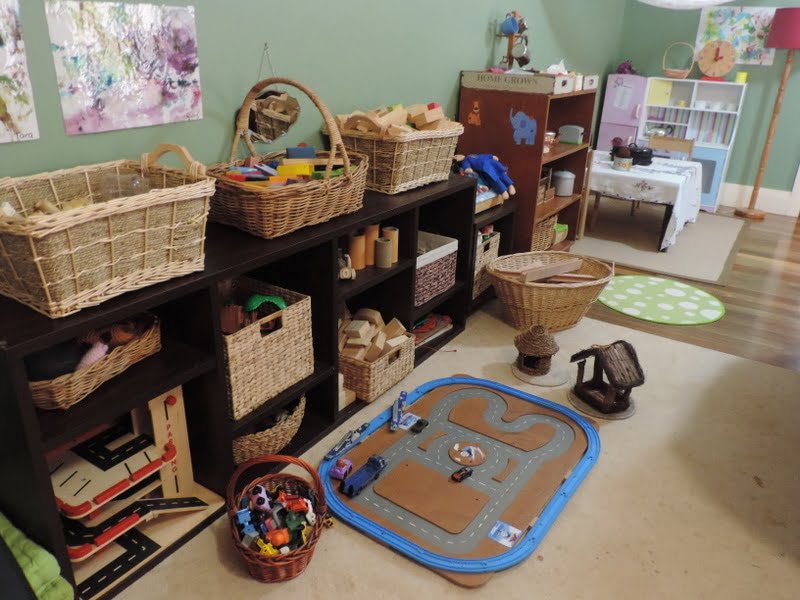
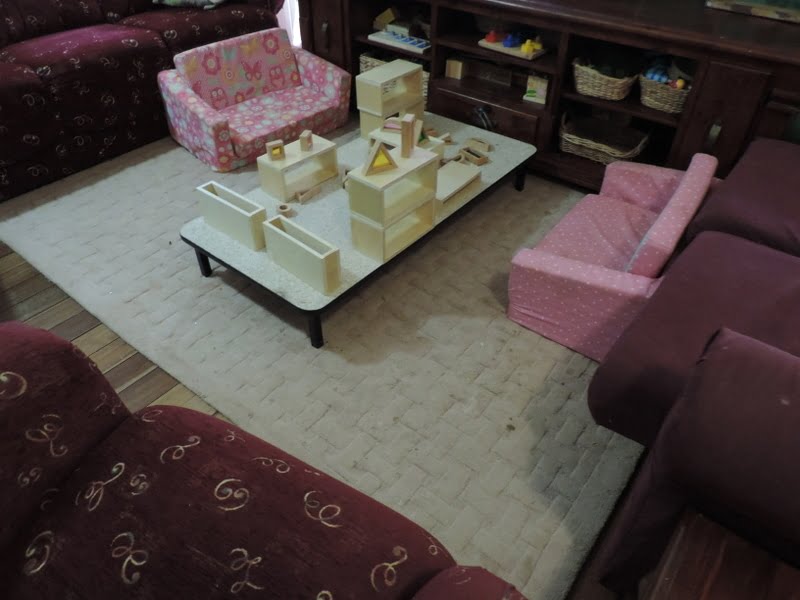
A quiet area
This area has lots of soft cushions, a comfy armchair and our bookshelves. I always have some board books and toddler books in a basket on the floor to make selection easier for the younger children. The armchairs are there for older children to escape to if they needs some time out from the little ones. I hung an old net curtain up to form a roof over my quiet area and the children loved it. I also keep a basket of puppets and felt stories for the children to explore in this area too.
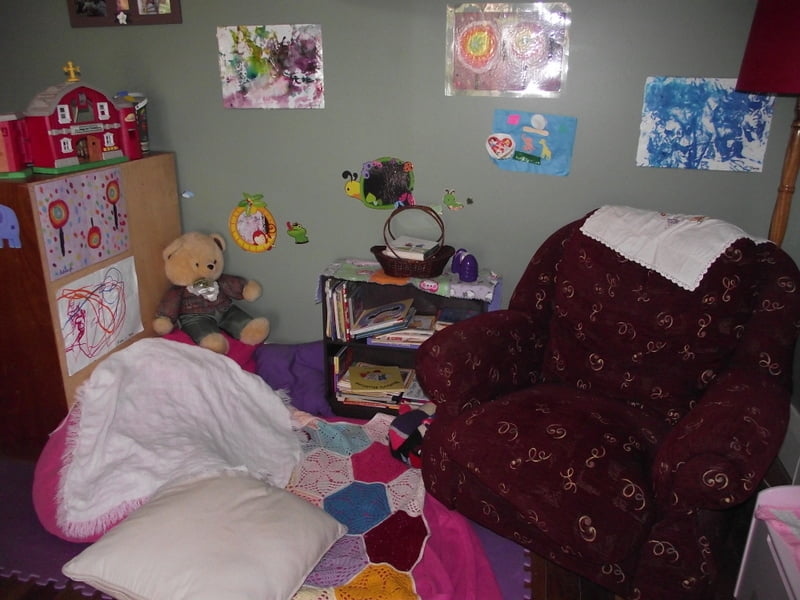
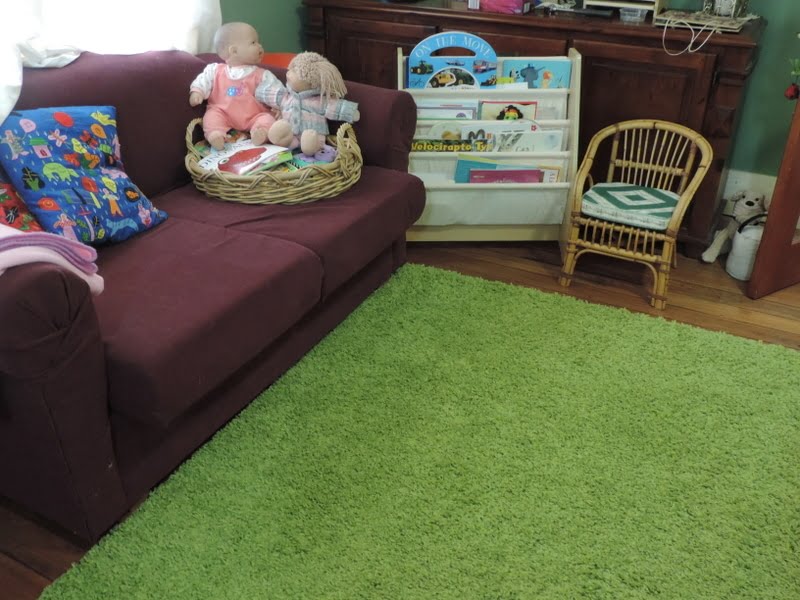
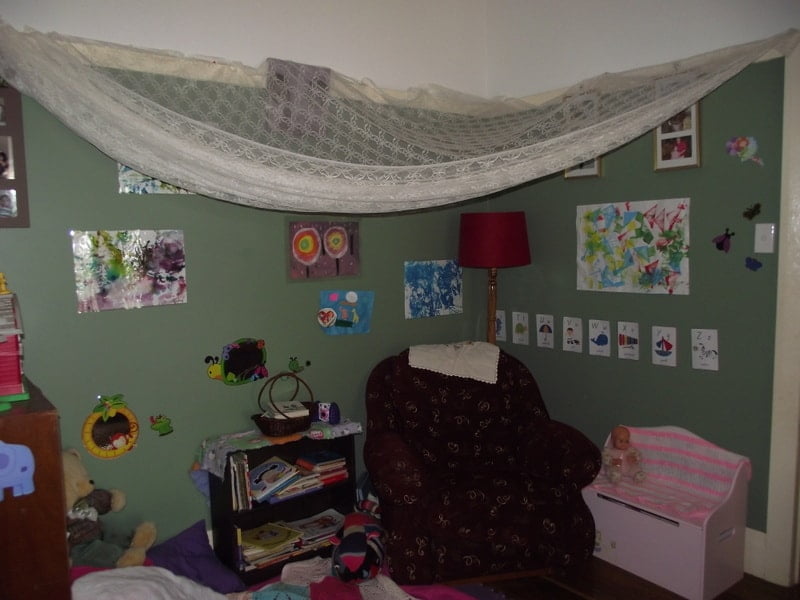
A puzzle/problem solving/strategy/manipulative games area
This area has a table or flat surface to work on (could be just a square of wood on the floor that can be put away if you don't have room for a table) A few chairs or cushions and shelving with baskets for the children to select puzzles, games and other manipulatives that encourage thinking and problem solving skills as well as a little fine motor practice.
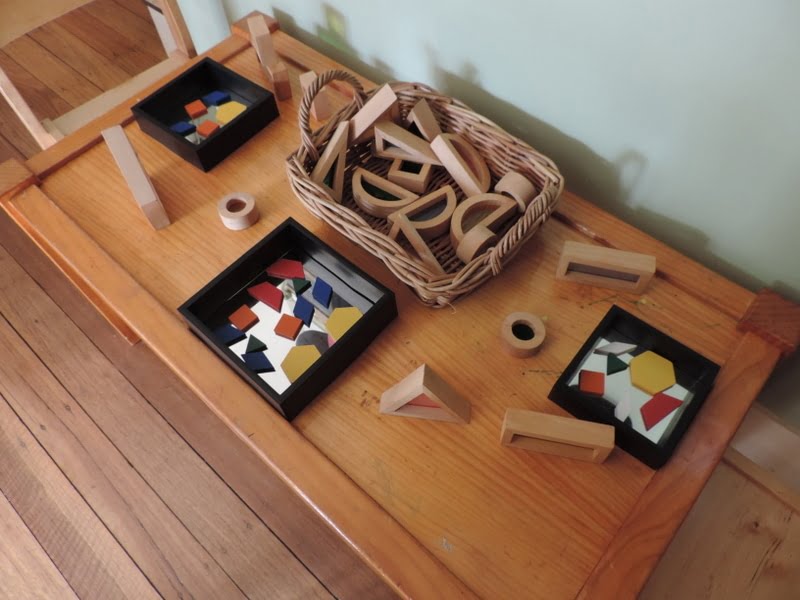
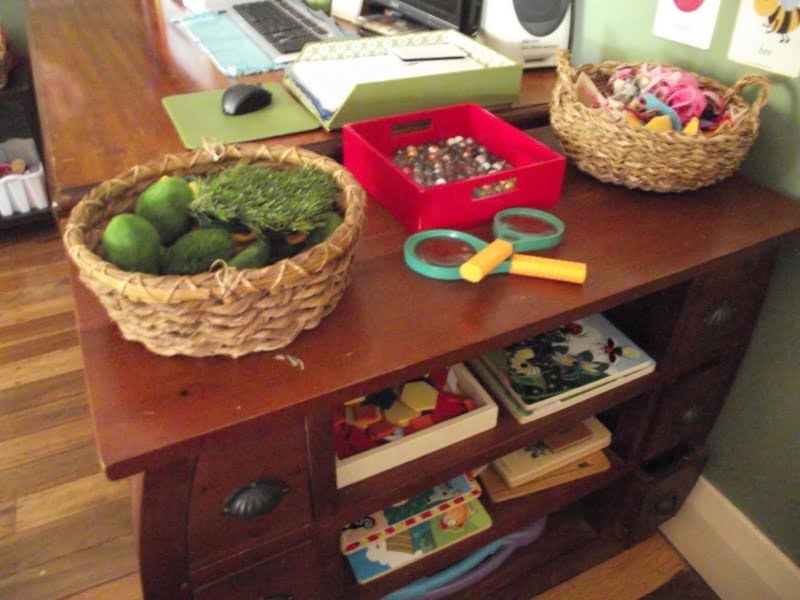
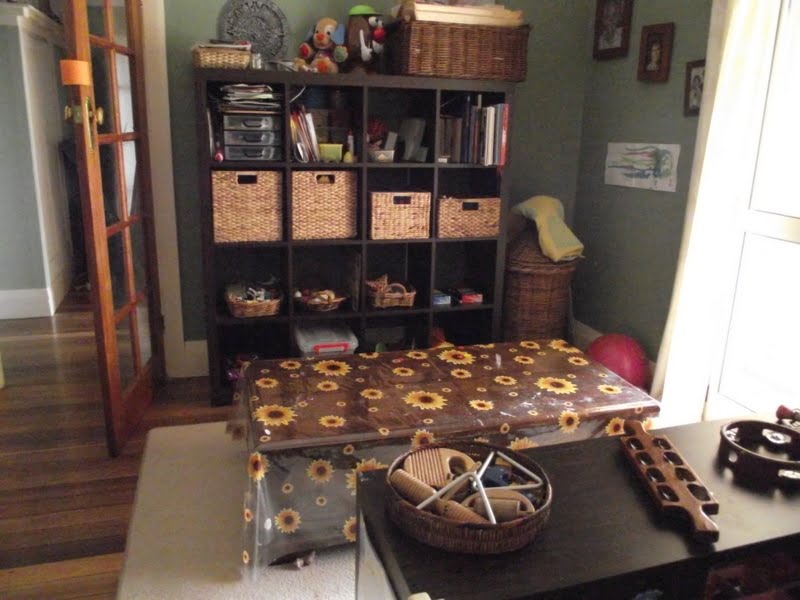
Craft/messy play area
To be honest with you I tend to do most of my messy activities outside as it is less stress for everyone and we all seem to enjoy it a lot more! But for those days when outside just isn't an option I have a table and chairs set up near our kitchen on easy to clean floorboards. If you have carpet I suggest buying a few metres of vinyl from Spotlight (or similar) and laying it down as a groundsheet. I also use these on my tables to protect the tops and cut down on cleaning as I just take them outside and hose off when I have the time. If you have babies highchair trays can be a way of containing the mess while allowing them some creative self expression still!
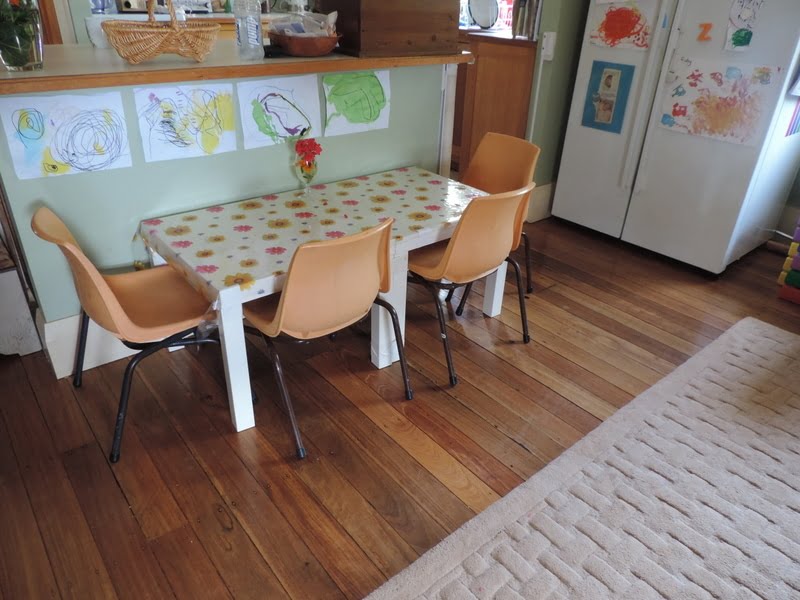
The areas I have listed above are what work for me (you might be different and that's ok!) and as previously mentioned I am always moving them around and rotating the toys on the shelves to keep boredom at bay. I also observe how the children are using the spaces and if something isn't working then I modify. At times it can be difficult when the ages are very mixed and that's when a little creative thinking and the use of high and low shelves can be a plus!
It can also be beneficial to use your furniture and spaces to break up the ‘running pathways' to ensure a good flow in the home and fewer running games inside!
Physical & Safety Considerations
A few things to be aware of especially if you are running a home daycare service.
- Are your tables and chairs at a child friendly height?
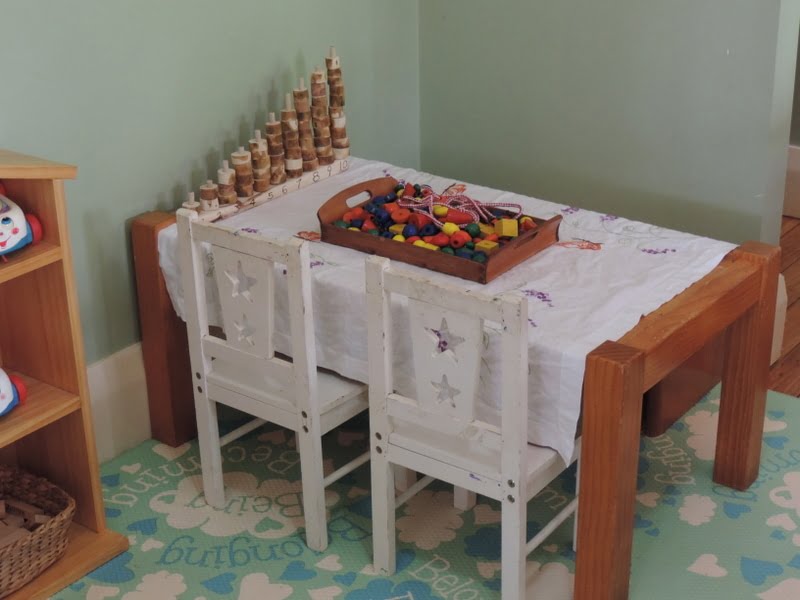
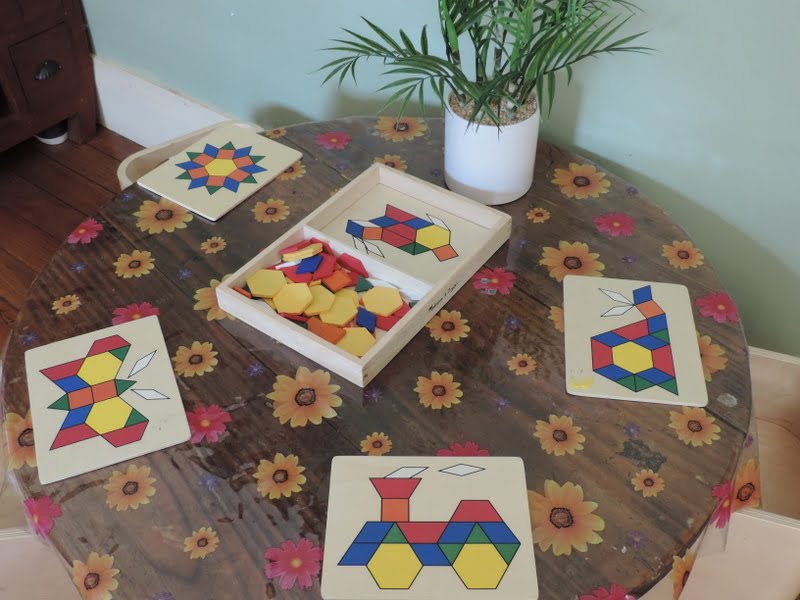
- Are the surfaces easy to clean regularly? Can cushion covers be taken off easily to wash?
- Are your hazardous materials stored out of reach of even the most inquisitive child?
- Do you have child proof locks on cabinets and drawers you don't want children accessing?
- Can you supervise all areas without having to be physically standing over their play?
- Can toys and props be moved around safely by children?
- Is there a good source of natural light?
- Is there adequate space for children to move about freely and spread out their play if they need?
- Are there play areas near low glass windows or doors? Do you need safety glass or film?
- Are the self selection toys you have displayed safe for babies as well as older children?
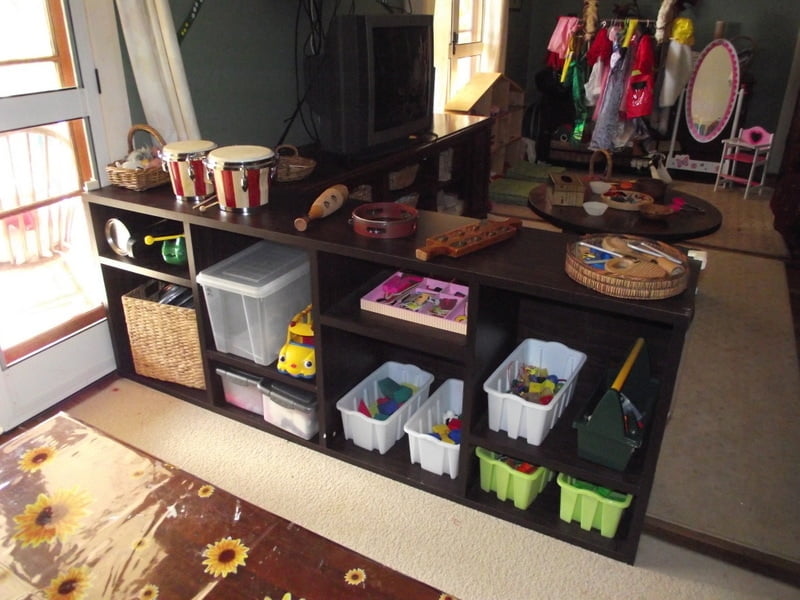
- Is there a space provided for older children to finish their projects or games away from the frustration of younger children wanting to be involved?
I hope I have given you a few ideas and questions to consider but please keep in mind that your home is your space, you must design your spaces in keeping with your home and to suit the needs of your children.
Every home is unique and every child has different requirements. I've listed the areas above as a guide, they aren't rigid but are meant to be used as a base to build upon and also incorporate your own individual style . Bring a little of your own family culture into the spaces and a little of the children's too.
Just because I have defined my spaces doesn't mean they always stay the same, yours shouldn't either, let them evolve. I'll speak more about evaluating your spaces and helping them to evolve as well as outdoor design in part two of this series.
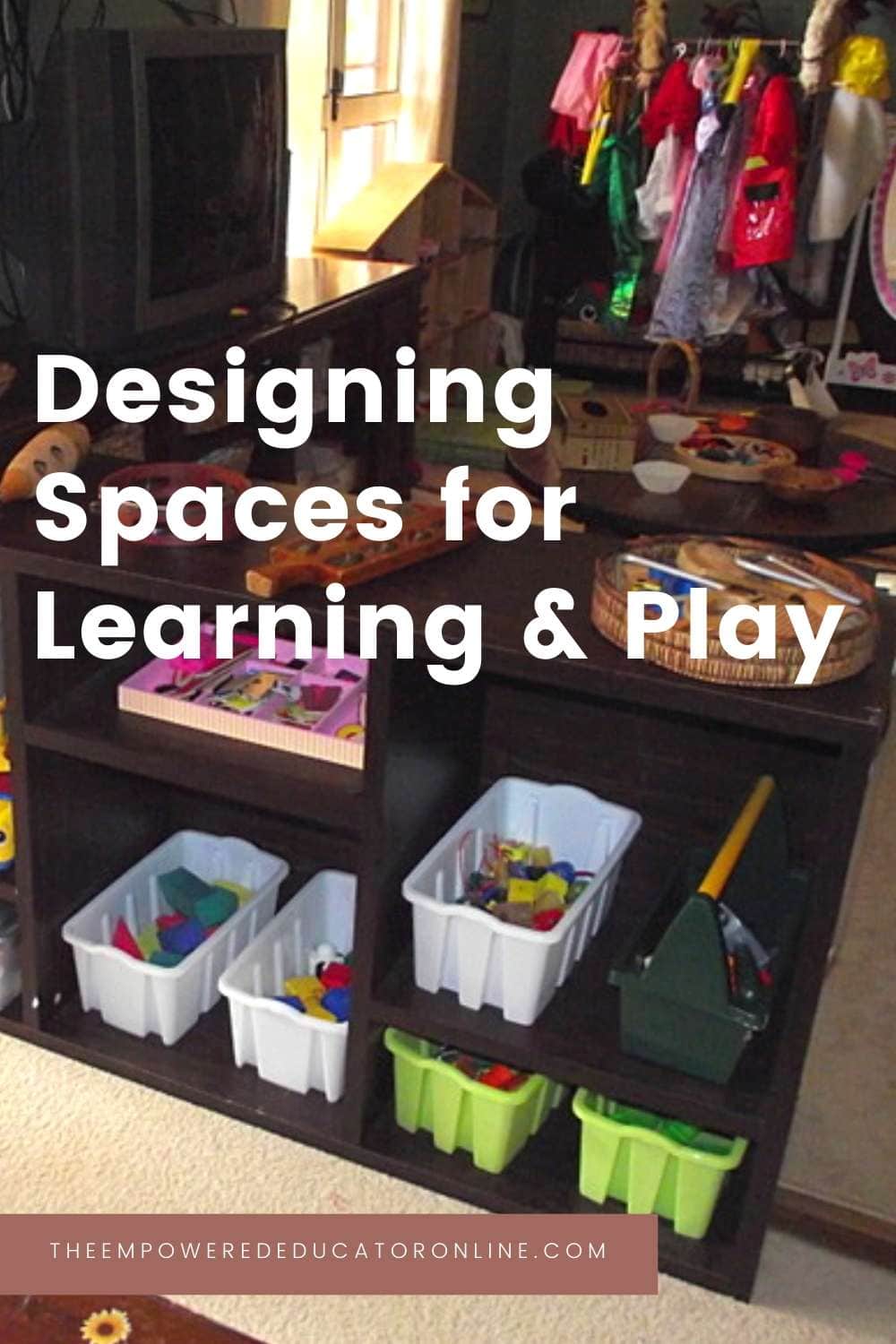
Now get busy on those spaces for learning and play!
A Little About Me

Jodie Clarke is an early childhood professional supporting educators who want and need to stay passionate about the work they do! She has 30 years hands-on experience in the early childhood and human services sectors across many different roles.
Jodie is mum to 3 in Australia and has already helped thousands of educators with their work through her popular blog posts, activity ideas, online training and e-books.
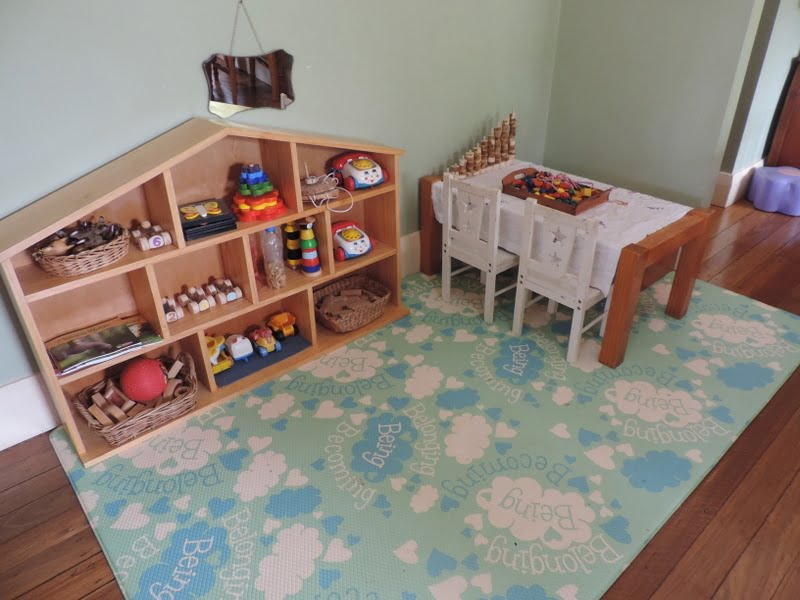
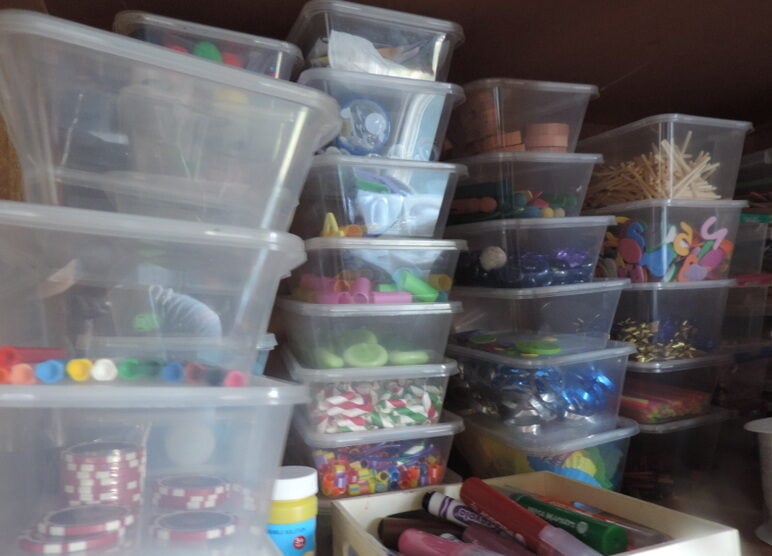
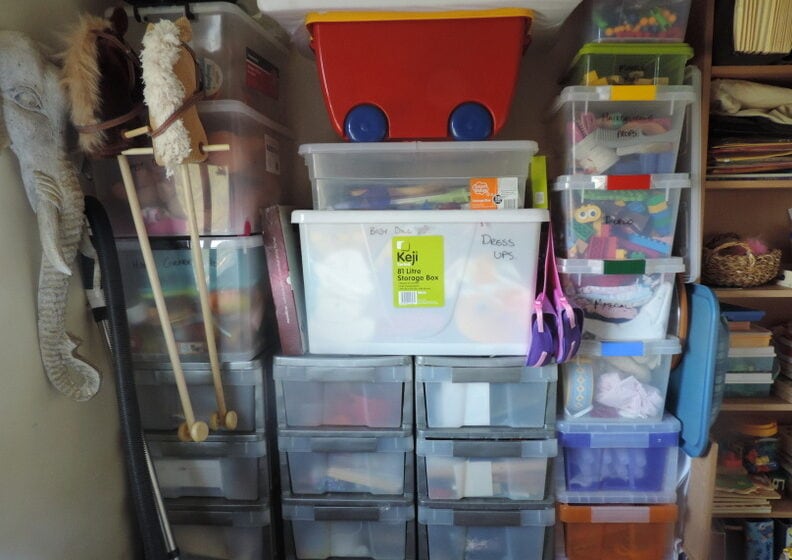
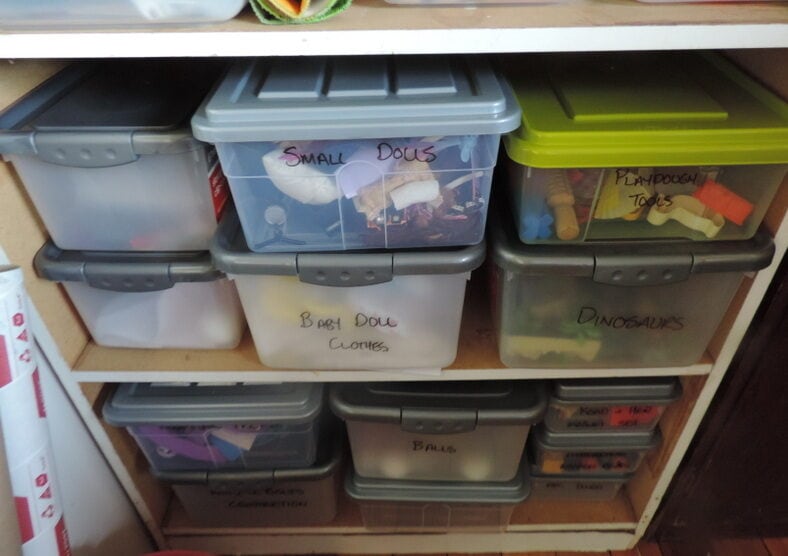
You have a great place! Is that your home? I would love just to visit and play there too! Lol
I live in a 2 bedroom apt in a basement actually. My space is not really bad, but alway looking to rearrange things and furniture.
great ideas you have I will try some.
lisa howell
Yes it is my home Lisa, it’s an old federation style home so needs a lot of rennovating but we are getting there slowly. I’ve been in smaller places too and know what you mean about always rearranging, amazing how many ways you can put furniture isn’t it lol Hope you find some of my ideas work for you, thanks for the feedback 😉
thank you for such a comprehensive post about designing around little ones and making their home comfortable while also functional for both adults and children!
Thanks for your feedback Meg, am so glad you found it useful!
You cracked me up with your comments about always rearranging the furniture. I do the same thing, only my family gets aggravated sometimes because they don’t appreciate change. 🙂
Your home daycare looks very inviting and looks like a great place to be a kid!
Thanks for sharing a bit of your home with others.